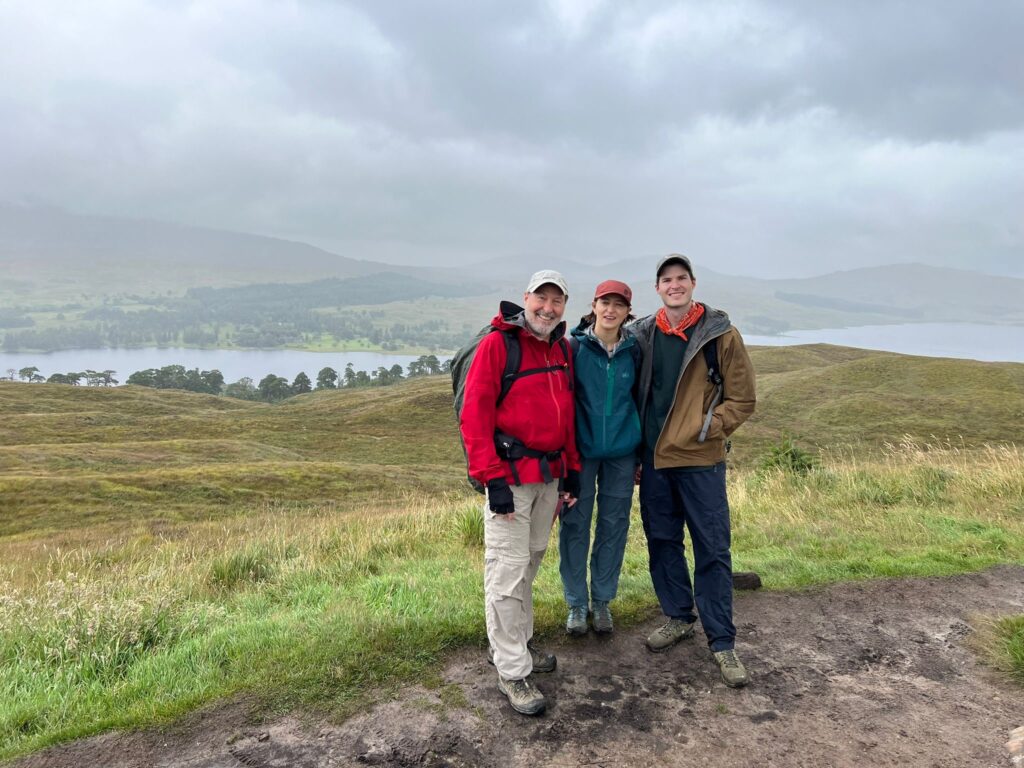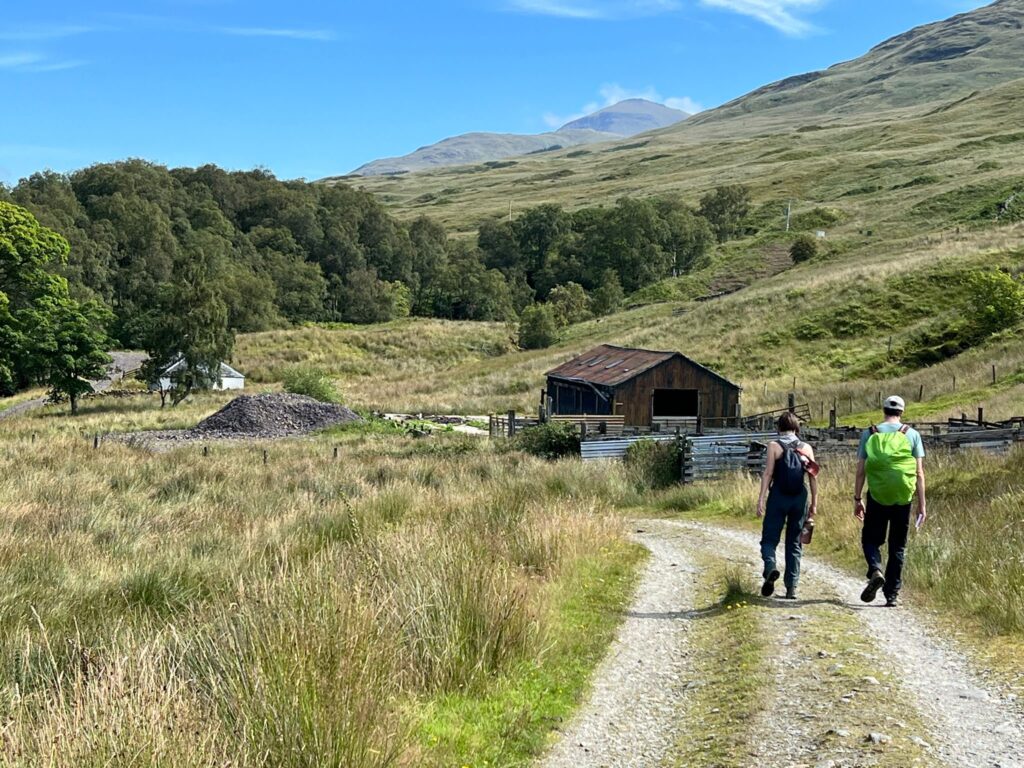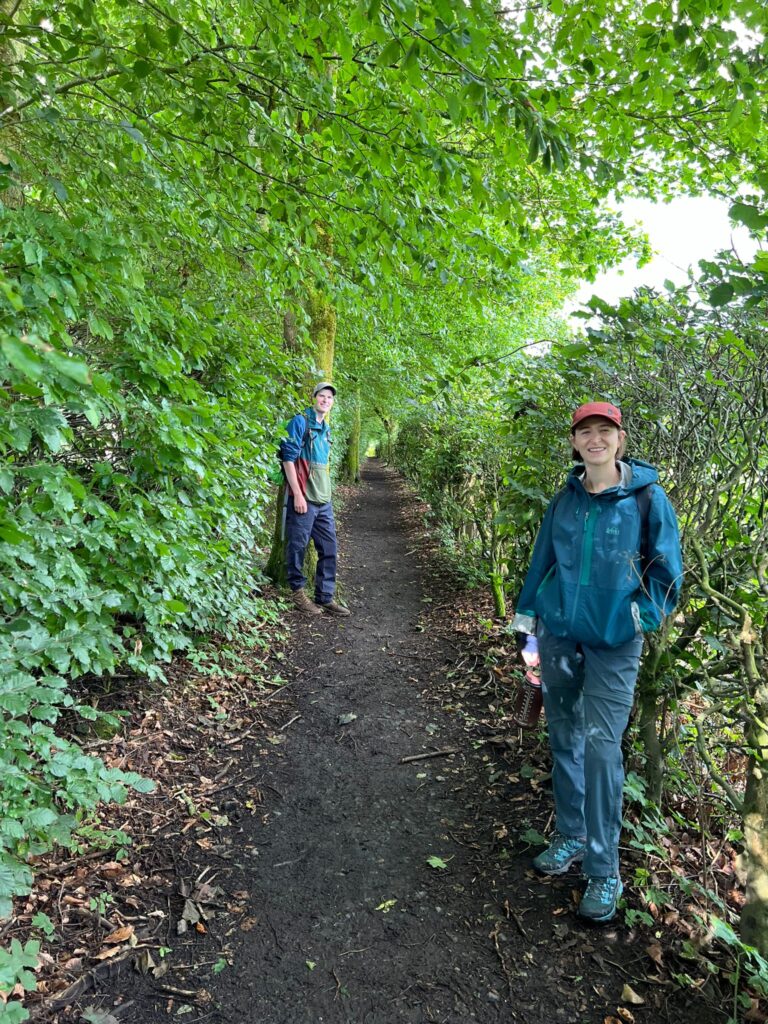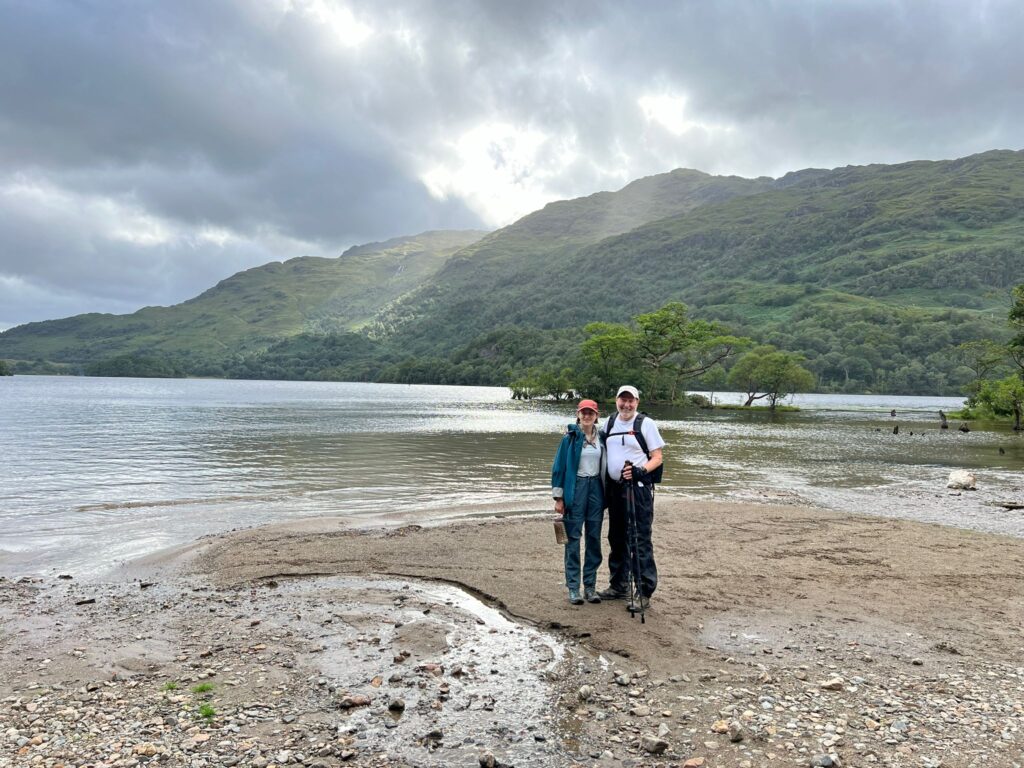
In a small bedroom community in Glasgow, Scotland named Milngavie begins the West Highland Way. It is a 96-mile hiking trail that travels from the lowlands of Scotland into the highlands and ends at Fort William. The West Highland Way started to become popular with hikers in the 1980s. That said, Scots have been walking this trail for hundreds of years. Today, over 70,000 people travel to Scotland to hike the West Highland Way every year. I had the opportunity to hike the trail this year with my two adult children. What follows are a few reflections.
The Plan: A well-thought-out plan is critical to a successful hike of the West Highland Way. The trail, 96 miles in length, has a fair number of treks up and treks down as well as several miles of challenging boulders to climb over and around near the front end of the hike. One can attempt to complete the journey in a few days or up to eight days. If an enjoyable hike void of injuries is the goal, then one needs to map out how many miles they wish to hike each day and to which location they wish to hike.
The same is true in business. No plan is a plan to bump along with the tide. No plan is a mediocre performance. It doesn’t matter if it is a Branch Manager running a branch, a business owner running a small to midsize business, or a senior-level executive in an enterprise-sized business. A well-thought-out plan is critical to success. The final product of a plan is not the benefit. Rather, it is the process of gathering valid and reliable data, thinking through all the internal and external factors the business is encountering, setting some realistic goals, and making smart and prudent decisions about the immediate, short-term, and long-term goals via a plan.
The Map Reader: The goal is to walk from “A” to “B”. There are hills and valleys, rivers and bridges, open field walking paths, big rocks to climb over, and some trail sections that feel like bushwacking. The path, in some places, is not clearly marked. And someone will get off track. Best to have a good map reader. First, having a map reader presumes that one has a map. Secondly, “good” is the operative word here. A map reader that informs us that we will be landing in 45 minutes but 3 hours later we are still walking is not good and only leads to frustration.
The same is true in business. We want to reduce our client concentration, reduce our turnover rates, increase our retention rates, increase our gross margins, etc. We have a plan with tactics. Who is collecting the data? How often are they looking at the data? Are they adjusting based on the data? Who in the organization is responsible for telling a branch or the business they are veering off track? Map readers are critical in successfully growing a branch office or business unit. These are internal, and sometimes external, people that are not afraid to speak the truth, show us the data, and ask challenging questions.

The Maverick: Invariably, at some point, someone is going to be hell-bent on landing at the next location ahead of everyone else. They just walk off. In our case, our maverick was our map reader. And was also the person dedicated to carrying the first aid kit. How do you deal with the maverick? Setting expectations on the front end? Offering constant input along the way? Affirming the positive behavior and rejecting the negative behavior? “Yes” to all these questions.
The same is true in business. There always seems to be a Sales Rep, a Recruiter, a Branch Manager, or a Regional Manager who halls off and starts singing their own tune. Mavericks are not necessarily bad for the business. Many times, a maverick will find new routes to getting in the door, closing deals, and outsmarting the competition. That said, the maverick needs to be managed. Data must be put into the system regardless of how successful an employee becomes. Standard operating procedures need to be followed. Working with mavericks with the 80/20 rule or the 70/30 rule often is a good compromise. 20% or 30% of the time, let the maverick try new things.

The Views: The West Highland Way is rocky. It is Scotland. It is easy to become over-focused on looking down at where you are walking or what rocks you are trying to avoid. Being too focused on your next step and you can lose the opportunity to see some amazing breath-taking views. These are places that are inaccessible to cars or motor vehicles. One needs to get in the habit of stopping and looking up every so many steps. Catching a breathtaking view is a gift and a moment for celebration.
Is this not true in business as well? Our industry and the work in our industry can be so tactical. I have heard a hundred times someone talking about the business as “moving the ball down the field one play at a time”. One play at a time is like one step on the West Highland Way. The reality is that the staffing business is tough. Clients do silly things. Candidates do silly things. And we are caught in the middle. Celebrate the small successes along the way. Everyday there are successes in our businesses that go uncelebrated, unrecognized. Take in the views.
The Silence: If you ever have camped or hiked, you know that the woods are pretty noisy. There are all kinds of action happening in the woods. The silence I am talking about here is the silence of getting away from cell phones, emails, the Amazon delivery guy, and all that other crap that descends upon us when we are working. All that 8,000+ stimuli that hit us every day. It usually takes three days to break from the noise and enter the silence. And when you do enter the silence, your brain does what your brain was built to do. It is truly a gift.
Silence is likely the number one item missing in our businesses that has the greatest dilatory effect on the business. All the big-name business consultants and extremely successful business executives speak about the value that silence offers a business. If one never steps into the silence, in the business, one is constantly in a state of reaction. Silence allows our brains to do what they were built to do. And when we have no practice of silence, our decision-making becomes very limited. We think we are making good decisions. We are just fooling ourselves.
Final Thoughts: I have a whole list of additional reflections. Just to name a few; dealing with the injured, adjusting plans based on injuries that pop up, throwing in the towel and finding a bus or hitchhiking to the next location, the smooth sailing parts of the hike, the engaging conversations on the hike, the people from all over the world one meets on the hike, pushing one’s body, etc., etc., etc..
Maybe my favorite reflection came from my daughter who joined me on the West Highland Way. At one point on the trail, I hiked ahead of her. It was a section of the trail that consisted of wide-open land. A quite spectacular section of the trail. I stopped to let her catch up to me. When she did, she said, “Looking at you at such a far distance in a wide-open landscape made me realize how small we really are”.

Visus Group is a growth strategy consulting firm servicing clients from startups to over a billion in annual revenue. Learn more about our highly specialized consultants and services at www.visusgroup.com
